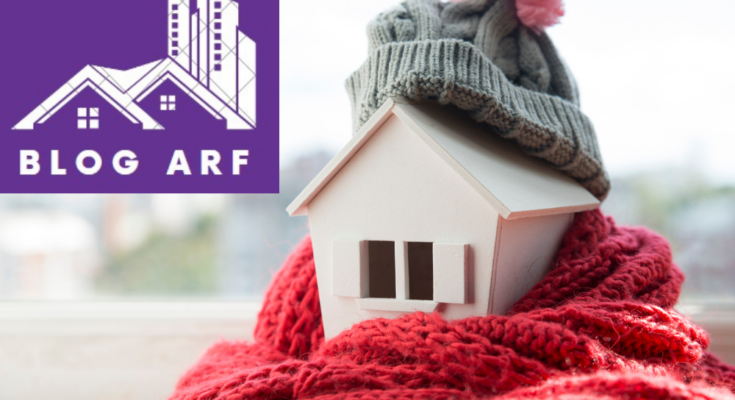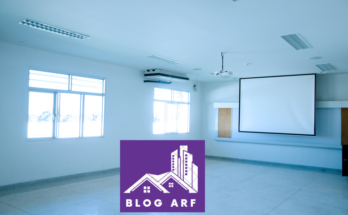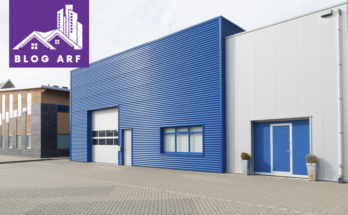In the world of architecture and construction, insulated building’s stand as supporters of energy efficiency and comfort. Insulated buildings perform a dynamic part in modern construction. It offers numerous benefits in terms of energy efficiency, cost savings and comfort.
These structures are exactly designed and constructed to minimize heat transfer between the interior and exterior environments and ensure optimal thermal comfort year-round. Insulated building’s employ various materials and techniques to create a protective barrier against heat loss or gain thereby reducing energy consumption for heating and cooling purposes.
Insulated Buildings Perfections
From residential homes to commercial complexes the principles of insulation are integral to modern construction practices. By incorporating insulation into building design residents can enjoy stable indoor temperatures, lower utility bills and reduced environmental impact. The insulation materials used can range from traditional options like fiberglass and foam to innovative solutions such as recycled materials and advanced aerogels.
Moreover, insulated buildings contribute to sustainability efforts by lowering carbon emissions associated with excessive energy consumption. As awareness of environmental issues grows, the demand for insulated buildings continues to rise, driving innovation in construction methods and materials. The insulated building’s represent a harmonious blend of comfort, efficiency and environmental responsibility in the built environment.
Importance of Insulated Buildings
Insulation in buildings is essential for several reasons. It helps to regulate indoor temperatures keeping spaces warmer in winter and cooler in summer also leading to increased comfort for occupants. Additionally, proper insulation reduces energy consumption by minimizing the need for heating and cooling, lowering utility bills and decreasing carbon emissions.
Moreover, Insulated Buildings improves indoor air quality by preventing moisture build-up which can lead to mold and decay growth. It also acts as a sound barrier reducing noise pollution from outside sources. Furthermore, insulation enhances the durability of buildings by protecting against extreme weather conditions and preventing structural damage.

It contributes to sustainability efforts by conserving resources and reducing environmental impact. Insulated Buildings also adds value to properties by increasing energy efficiency and overall comfort. It makes them more attractive to potential buyers or renters.
Overall, the importance of Insulated Buildings cannot be overstated. As it positively impacts comfort, energy efficiency, durability and environmental sustainability.
What is the Insulation Installation Process for the Insulated Building?
The insulation installation process for insulated buildings typically involves several key steps. First, the chosen insulation material is carefully measured and cut to fit the specific areas of the building. Next, the insulation is installed in walls, floors and ceilings to create a barrier against heat transfer. Finally, any gaps or seams are sealed to ensure maximum effectiveness in regulating temperature and energy efficiency.
Preparation of Insulated Buildings
- Clean and clear the area.
- Ensure safety measures are in place.
Measurement:
- Take accurate measurements.
- Calculate required insulation materials.
Cutting:
- Cut insulation material to size.
- Use appropriate tools for precision.
Placement:
- Fit insulation snugly into spaces.
- Ensure no gaps or overlaps.
Securing:
- Use adhesive or fasteners.
- Ensure firm attachment to surfaces.
Sealing:
- Seal any gaps or joints.
- Use suitable sealants or tapes.

Testing of Insulated Buildings
- Verify insulation effectiveness.
- Conduct any necessary adjustments.
Clean-up of Insulated Buildings
- Remove excess materials.
- Leave the area clean and tidy.
Types of Insulation Materials
Insulation materials come in various types each serving distinct purposes in maintaining desired temperatures and energy efficiency within structures. Common types include fiberglass which consists of fine glass fibers and is widely used for thermal insulation. Another type is foam insulation available in forms like polystyrene and polyurethane, prized for its high insulating properties and versatility.
Additionally, mineral wool derived from molten rock or recycled materials. It offers excellent fire resistance and soundproofing capabilities making it suitable for diverse applications in construction and industry. Understanding the characteristics and properties of different insulation materials is important for selecting the most suitable option for specific needs.
Fiberglass Insulation:
Made of fine glass fibers, it’s affordable and easy to install. Great for controlling temperature and reducing noise.
Foam Board Insulated Buildings
Dense foam panels that offer high thermal resistance. Ideal for walls, roofs and foundations due to its moisture resistance.
Cellulose Insulation:
Environmentally friendly insulation made from recycled paper products. Effective at reducing air infiltration and improving energy efficiency.
Spray Foam Insulation:
Expanding foam applied with a sprayer, fills gaps and seals air leaks effectively. Offers superior insulation properties but can be more expensive.
Mineral Wool Insulation:
Made from natural or recycled materials provides excellent fire resistance and soundproofing. Suitable for high-temperature applications.
Reflective Insulation:
Uses reflective surfaces to redirect heat flow commonly used in attics and roofing systems. Helps to maintain consistent temperatures and reduce energy costs.
Radiant Barrier Insulation:
Reflects radiant heat instead of absorbing it, keeping spaces cooler in hot climates. Installed in attics, walls and roofs to improve energy efficiency.
Polyurethane Insulation:
Versatile foam insulation offering high R-value and moisture resistance. Commonly used in spray foam form for sealing gaps and cavities.

Polystyrene Insulation:
Lightweight and durable insulation available in two types: expanded (EPS) and extruded (XPS). Resistant to moisture and suitable for various applications.
Cotton Insulation:
Made from recycled denim or cotton fibers, environmentally friendly and safe to handle. Provides good thermal and audio insulation properties.
Aerogel Insulation:
Ultra-lightweight material with exceptional thermal performance. Expensive but highly effective in extreme temperature environments.
Polyisocyanurate Insulation:
Inflexible foam insulation offering high R-value and fire resistance. Commonly used in roofing and wall applications for its thermal efficiency.
Benefits of Insulated Buildings
Insulated building’s offer numerous benefits, enhancing comfort and efficiency. Firstly, they provide improved thermal regulation, keeping interiors cooler in summer and warmer in winter, reducing energy consumption for heating and cooling.
Secondly, insulation helps to minimize noise transmission, creating quieter and more peaceful indoor environments. Additionally, insulated structures contribute to lower utility bills, as they require less energy for climate control, thus promoting sustainability and cost savings for occupants.
- Increased energy efficiency leading to lower heating and cooling costs.
- Enhanced comfort levels with consistent indoor temperatures.
- Reduced environmental impact through lower energy consumption.
- Prevention of condensation and moisture problems, promoting healthier indoor air quality.
- Protection of building structure from thermal stress and temperature fluctuations.
- Minimize heat loss during cold weather, reducing reliance on heating systems.
- Improved sound insulation, creating quieter indoor environments.
- Extended lifespan of heating, ventilation, and air conditioning (HVAC) systems.
- Enhanced fire resistance due to materials used in insulation.
- Regulation of indoor humidity levels for optimal comfort and health.
- Preservation of interior furnishings and materials by minimizing temperature variations.
- Increased property value with energy-efficient and sustainable building features.
- Compliance with building codes and regulations regarding energy efficiency.
- Reduction of carbon footprint and greenhouse gas emissions.
- Enhanced occupant productivity and well-being in insulated spaces.
- Protection against extreme weather conditions, such as heatwaves and cold snaps.
- Prevention of thermal bridging, ensuring consistent insulation across the building envelope.
- Decreased dependency on fossil fuels for heating and cooling needs.
- Improved resale potential and marketability of properties with high energy performance ratings.
- Promotion of sustainable building practices and environmentally friendly construction.
Comparative Analysis of Insulated vs. Non-Insulated Buildings
| Aspect | Insulated Building’s | Non-insulated Building’s |
| Energy Efficiency | Insulation reduces heat transfer, leading to lower energy consumption for heating and cooling. | Lack of insulation results in higher energy usage for heating and cooling due to heat loss or gain through walls, ceilings, and floors. |
| Comfort | Insulated buildings maintain more stable indoor temperatures, providing occupants with greater comfort throughout the year. | Non-insulated building’s experience temperature fluctuations, leading to discomfort for occupants, especially during extreme weather conditions. |
| Cost-effectiveness | While insulation installation may require initial investment, the long-term savings on energy bills make insulated building’s more cost-effective. | Non-insulated building’s may seem cheaper initially, but higher energy bills over time make them less cost-effective in the long run. |
| Environmental Impact | Insulated building’s typically have lower carbon emissions due to reduced energy consumption, contributing to a smaller environmental footprint. | Non-insulated building’s contribute more to greenhouse gas emissions due to higher energy usage, leading to a larger environmental impact. |
| Structural Integrity | Insulation can help regulate moisture levels within the building, reducing the risk of structural damage caused by condensation and mold growth. | Lack of insulation may lead to moisture build-up within walls and ceilings, potentially compromising the structural integrity of the building. |
| Noise Reduction | Insulation materials absorb sound, reducing noise transmission from both inside and outside the building, creating a quieter indoor environment. | Non-insulated building’s are more susceptible to noise pollution, allowing sounds from outside and inside to penetrate easily, affecting occupants. |
| Lifespan | Insulated building’s often have longer lifespans as they experience fewer fluctuations in temperature and moisture levels, reducing wear and tear on materials. | Non-insulated buildings may experience accelerated deterioration due to temperature fluctuations and moisture exposure, shortening their lifespan. |
| Resale Value | Insulated building’s tend to have higher resale values as they offer improved energy efficiency and comfort, appealing to potential buyers. | Non-insulated building’s may fetch lower resale values due to higher operating costs and potential maintenance issues associated with lack of insulation. |
| Sustainability | Insulated building’s align with sustainability goals by reducing energy consumption and greenhouse gas emissions, making them a more eco-friendly choice. | Non-insulated building’s are less sustainable as they contribute more to energy wastage and environmental degradation through higher energy usage. |
| Regulatory Compliance | Many building codes and standards require a certain level of insulation to meet energy efficiency regulations, ensuring compliance with legal requirements. | Non-insulated building’s may face challenges in meeting building codes and regulations related to energy efficiency, potentially leading to penalties. |
| Health Benefits | Proper insulation can improve indoor air quality by reducing the risk of mold growth and allergen infiltration, promoting better respiratory health for occupants. | Lack of insulation may lead to poor indoor air quality, increasing the risk of respiratory issues and allergies among occupants. |
| Maintenance Requirements | Insulated building’s typically require less maintenance as they experience fewer temperature-related issues and structural damage, reducing upkeep costs. | Non-insulated building’s may require more frequent maintenance to address issues such as moisture damage, mold growth, and temperature-related wear. |
| Durability | Insulated building’s are often more durable as they are better protected against temperature fluctuations, moisture damage, and structural deterioration. | Non-insulated building’s may suffer from premature deterioration due to exposure to extreme temperatures, moisture, and other environmental factors. |
| Fire Safety | Certain types of insulation materials provide fire-resistant properties, enhancing the overall fire safety of the building and reducing the spread of flames. | Non-insulated building’s lack the fire-resistant properties offered by some insulation materials, potentially increasing the risk of fire spread. |
| Adaptability | Insulation allows for greater flexibility in building design and construction, enabling architects to achieve various aesthetic and functional goals. | Non-insulated building’s may have limited design flexibility due to constraints posed by temperature control and energy efficiency requirements. |
Maintenance and Care of Insulated Buildings
Maintenance and care of insulated building’s are essential for ensuring their long-term performance and energy efficiency. Regular inspections of Insulated Buildings, such as foam, fiberglass or cellulose help identify any signs of wear, damage, or deterioration. Additionally, maintaining proper seals around doors, windows and other openings prevents air leakage which can compromise the insulation’s effectiveness.
Regular cleaning of insulation surfaces and ductwork also helps maintain optimal airflow and prevents the build-up of contaminants that can reduce indoor air quality. Overall, proactive maintenance and care practices are essential for maximizing the lifespan and energy-saving benefits of insulated buildings.

- Regularly inspect insulation for signs of damage or wear.
- Keep insulation dry to maintain its effectiveness.
- Seal any gaps or cracks to prevent air leakage.
- Clean insulation surfaces periodically to remove dust and debris.
- Replace damaged insulation promptly to ensure optimal performance.
- Monitor moisture levels to prevent mold or mildew growth.
- Check seals around doors and windows for tightness.
- Schedule professional inspections annually for thorough evaluation.
- Use weather-stripping to seal gaps around doors and windows.
- Install insulation properly to maximize its efficiency.
- Keep vents and ducts clean and unobstructed for proper airflow.
- Utilize programmable thermostats to regulate indoor temperature.
- Inspect and maintain roofing materials for insulation protection.
- Consider upgrading insulation for better energy efficiency.
- Educate occupants on proper energy-saving practices.
Meta Description
Discover how insulated building’s offer comfort, efficiency & sustainability. Learn about installation, benefits & maintenance for eco-friendly living.
Bottom Lines of Insulated Buildings
Insulated buildings perform a dynamic part in enhancing comfort, efficiency and sustainability in the built environment. By minimizing heat transfer and regulating indoor temperatures they offer occupants year-round comfort while reducing energy consumption and utility costs. With a wide range of insulation materials and installation processes available. These buildings provide effective solutions for maintaining optimal thermal conditions and improving indoor air quality.
Additionally, insulated structures contribute to environmental efforts by lowering carbon emissions and promoting sustainable construction practices. Overall, the benefits of insulated buildings extend beyond energy savings to include durability, noise reduction and enhanced property value. It makes them an essential component of modern construction for a greener and more comfortable future.
FAQs
What are the primary benefits of insulated buildings?
Insulated building’s offer increased energy efficiency, comfort, and sustainability.
How does insulation contribute to the environmental impact of buildings?
Insulation reduces energy consumption, leading to lower carbon emissions and a smaller environmental footprint.
What are the key steps in the insulation installation process?
Preparation, measurement, cutting, placement, securing, sealing, testing, and clean-up.
Why is maintenance and care important for insulated building’s?
Regular maintenance ensures optimal performance, longevity, and energy efficiency.
What distinguishes insulated building’s from non-insulated ones?
Insulated building’s provide better energy efficiency, comfort, and environmental sustainability compared to non-insulated building’s.





